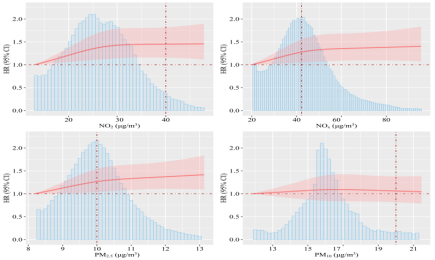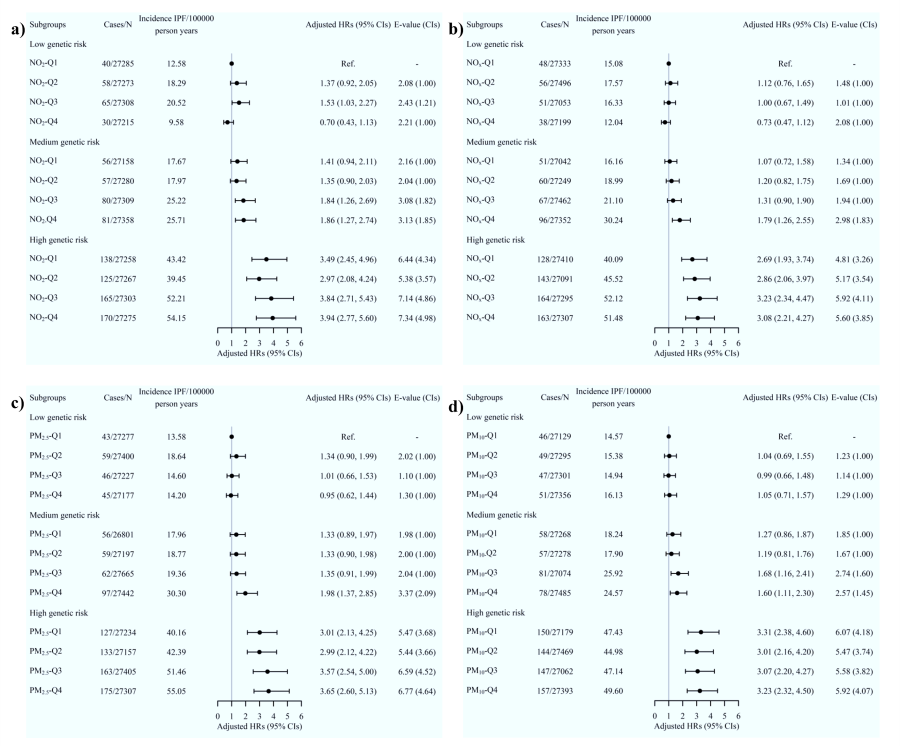(Seehttps://erj.ersjournals.com/content/early/2022/09/14/13993003.00777-2022 for details).
On Sep. 22, 2022, European Respiratory Journal, an authoritative respiratory journal, published online the latest research results of Professor Tian Yaohua's team from the School of Public Health entitled "Air pollutants, genetic susceptibility and risk of incident idiopathic pulmonary fibrosis". Feipeng Cui, a graduate student from the School of Public Health, and Prof. Yu Sun were the co-first authors, and Prof. Yaohua Tian was the corresponding author.

Idiopathic pulmonary fibrosis (IPF), the most common type of idiopathic interstitial pneumonia of unknown etiology, is a chronic and irreversibly progressive fibrotic lung disease with a severe prognosis. Due to few treatment options, the median survival of individuals diagnosed with IPF is 2-4 years. The incidence of IPF has been increasing worldwide and it is also rising together across countries in recent years. Accumulating evidence showed that air pollution was a risk factor for IPF. Experimental studies have revealed that air pollution was a trigger for chronic inflammation, oxidative stress, telomere shortening, surfactant abnormalities, and stress of the endoplasmic reticulum, all of which were associated with mechanisms of IPF. Several epidemiologic studies have reported the relationships of exposure to air pollution with exacerbation, hospitalization, and mortality of IPF. However, no study has assessed the associations of individual air pollution exposure with the risk of incident IPF.
Among 433738 participants from the UK Biobank, the incidence of IPF was 27.45/100000 person-years during a median follow-up of 11.78 years. The adjusted hazard ratios (HRs) [95% confidence interval (CIs)] of IPF for each interquartile range increase in NO2, NOx, and PM2.5 were 1.11 (1.03, 1.19), 1.07 (1.01, 1.13), and 1.09 (1.02, 1.17), respectively.

Exposure-response relationships of air pollutants with the risk of incident IPF.
We further assessed modification effect of genetic susceptibility. The polygenic risk score (PRS) was constructed using 13 independent SNPs. There were additive interactions between NO2, NOx and PM2.5 and genetic susceptibility. Participants with high PRS and high air pollution had the highest risk of incident IPF compared to those with low PRS and low air pollution [NO2: 3.94 (2.77, 5.60); NOx: 3.08 (2.21, 4.27); PM2.5: 3.65 (2.60, 5.13); PM10: 3.23 (2.32, 4.50)].

Joint effects of the air pollutants concentrations and PRS on the risk of incident IPF.
To the best of our knowledge, this is the first study to investigate the association between individual air pollution exposure and the risk of incident IPF. There are additive effects of air pollutants and genetic susceptibility on IPF risk.

